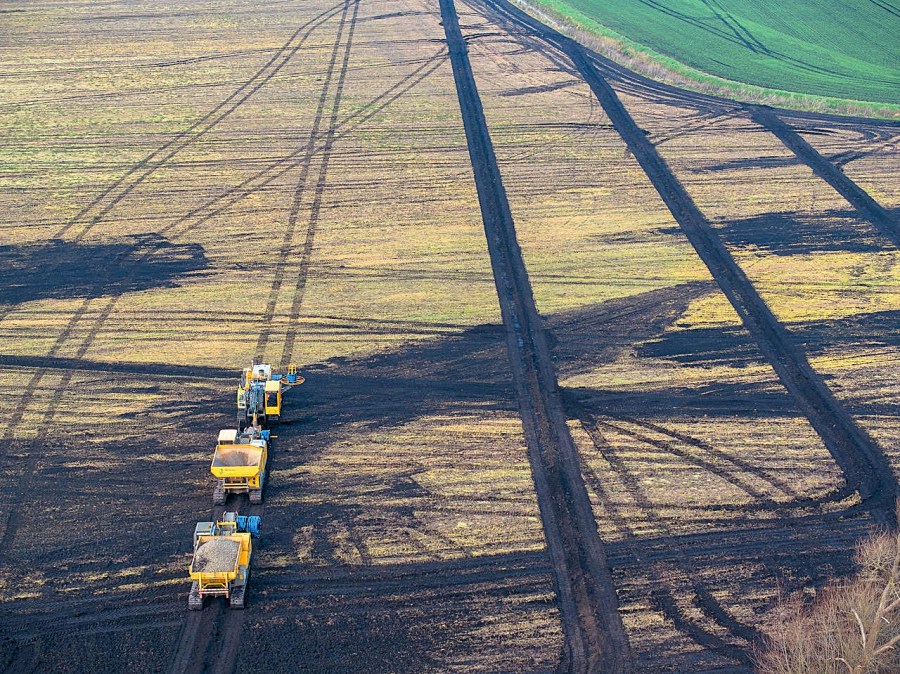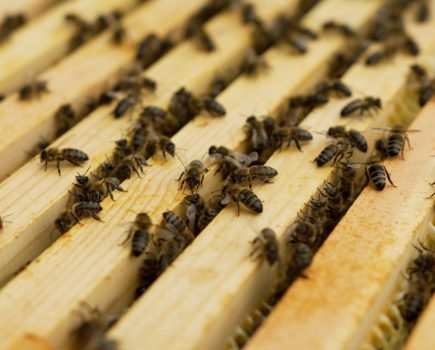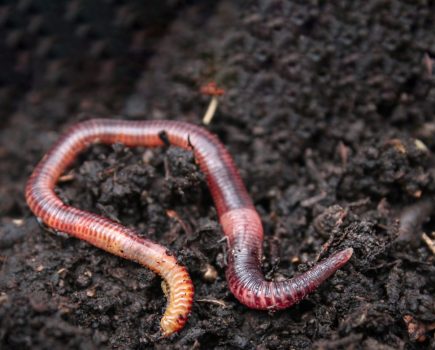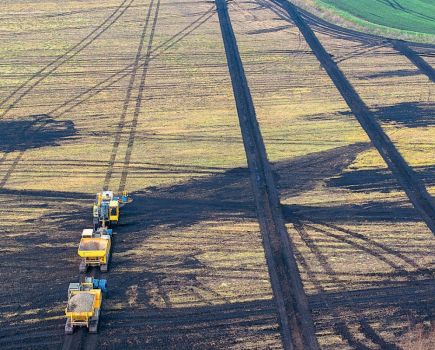In some instances, drainage schemes installed in the heydays of the 70s and 80s are proving no longer fit for purpose. CPM finds out why this could be the case and asks what can be done to put matters right.
“Pressure of other farm work often means maintaining drainage slips down the agenda.” KIRK HILL
By Mike Saull
There’s every chance that heavier textured soils tended daily on-farm have been drained in the past. But whatever the reason and the scheme that was installed then, with a hand on heart, can it be said they’re currently at their best?
Recent weather event trends have brought this into sharp focus, with some growers unable to establish crops during wetter autumns. Equally, It’s becoming increasingly difficult to maintain or develop good soil health on fields that are quicker to reach their capacity.
According to Kirk Hill, technical director of the Soils and Drainage Team at ADAS, a lack of investment, care and attention are often to blame. “Realistically, many farmers will find drainage schemes installed under grant 50 or so years ago may be coming to the end of their useful life.
“Much will depend on the maintenance these systems have received, and the key will have been to keep outfalls clear and running to prevent pipes from silting up,” he explains.
“With the possible exception of the low laying parts of East Anglia – where any neglect of drainage can result in more immediate, obvious and costly problems – pressure of other farm work often means maintaining drainage slips down the agenda. This can impact on the efficiency and success of in-field operations, as well as becoming more expensive to mitigate in the end.”
Kirk says subsoiling can help to remove soil structural damage and allows excess water to escape into gravel backfill above field drains. However, years of loosening will have redistributed the gravel reducing connectivity and drainage effectiveness.
“Risks have ramped up during the past 10 years or so on the back of climate change. As a result, it may pay to reevaluate the likely £3000-4000/ha costs of a new system against current and potential future crop values,” he continues.
“Don’t base your £100,000+ investment decision on one major rainfall event. Check soils first as poor soil structure could be a major contributing factor. Ensure ditches and existing drain outfalls aren’t simply blocked; moling or jetting may be another option (see box) that could enliven your existing system.”
New approaches are commonly based on the experience of the contractor employed and there’s no doubt that the vast majority do a great job using well-established drainage design principles, he adds.
“My advice would be to spend time looking at pipe sizes and spacing to cope with heavier and more frequent rainfall events,” says Kirk. “For example, while the previous standard recommendation of 60mm lateral pipes with gravel backfill may technically be sufficient, a slightly larger pipe and gravel trench may give greater system longevity and be a better investment in the long run, particularly if you frequently subsoil.
“Growers have to ask, is the existing system satisfactory and are there reasons why drainage may be inadequate for current requirements? For example, land use may have changed since the system was installed and the scheme no longer works for today’s cropping regime.”
Another reason why an existing system may deteriorate can be the lack of stone backfill used, he believes. “On heavy soils I’d always recommended gravel-backfilled drain trenches. Where soil backfill is used, the scheme may work well initially, however, over time, the soil aggregates formed during drain laying will deteriorate to a less permeable condition that reduces the rate of water movement.
“It can be difficult to recognise the signs of crop stress on fields where old drains are gradually becoming less effective and where only some crops in the rotation may be affected by stress. But, look at the history of the field and whether the field’s accessibility or productivity has been deteriorating, or pest susceptibility increasing, as the years go by,” suggests Kirk.
Tim Sisson of Norfolk-based William Morfoot agrees that many 40-year-old schemes are now not fit for purpose. “We’re now running four trenching machines all year-round and most of our work is replacing tired and worn-out schemes that have failed.
“Old schemes were often installed with little or no gravel over the pipes and in heavy clay subsoils, and the drains have effectively become capped so that water can’t filter into them from the surface.
“Trenching equipment and technology from that period weren’t as good as today so shallow pipe depths and inconsistent grading are commonly seen. Broken and worn-out clay drains are another common sight making water flow impossible.”
He believes that ditch systems have also been commonly neglected – meaning outfalls are below sediment in ditch beds. “And because drain jetting has rarely been undertaken, root ingress and sediment build up within the pipes is a major problem.”
Tim’s view is that farmers looking at maintaining existing schemes should start with the basics. “Gather up existing historic paper plans and have them digitised; read and understand them carefully and make sure they’re ‘as-built’ drawings and not just proposal plans. Get an organised system in place whereby all concerned with the farm can access them.”
After this it’s a case of maintaining and looking after the ditches, he says. “Use a professional contractor to clean them out and spend time locating, finding and marking any existing outfalls before the digger bucket comes through, ensuring the integrity of the drain is preserved.
“Clear the outfall end of any sediment and debris and ensure it’s positioned with adequate levels of freeboard above the water level in the ditch. Walk these drains and ditch systems when soils are at field capacity and record where they’re working well or badly.
“Jet them and spend time investigating problem drains to determine if the schemes were installed with acceptable quantities of gravel backfill and whether the pipes are installed at the correct depths and gradients.”
Above all, Tim says farmers should be honest and realistic about the state of their drainage. “Don’t invest time and effort trying to revive a scheme which is clearly no longer working. For example, there’s no point mole draining a field if there isn’t a comprehensive stoned piped system within it.
“We often find people can make drainage conditions worse by carrying out ‘recreational moling’ where there’s no viable outlet for the water,” he comments.
As a result of a resurgence in drainage interest, William Morfoot is now working 12 months a year delivering large-scale schemes using working windows around winter and spring crops. Scheme sizes have been getting larger in recent years and data from yield mapping and satellites indicate typical yield increases of 25-30% after installing a new system.
“Given this level of yield uplift, many growers are asking themselves the question: ‘what’s the opportunity cost of not investing in land drainage?’. Then there’s the benefits of improved timeliness and crop uniformity alongside lower chemical, fertiliser and seed inputs,” explains Tim.
“Finally, with increasingly extreme rainfall events such as those seen in 2019, 2020 and 2023, many growers are seeing rapid payback times on drainage investment from being able to be drill in wet autumns on land that previously couldn’t be touched.”
Rob Burtonshaw, director of Warwickshire-based Farm Services, reports a similar resurgence of interest in drainage. “Old schemes have been neglected and ignored for a long time and issues have built up. Soil condition is given much greater attention now than it was in the early 2000s, but many of the regenerative techniques now being practiced won’t work if the soil is wet.
“Most are looking to push forward yields and this can be impossible without good drainage, so we are the beneficiaries,” he says.
According to Rob, trends toward minimum tillage can mean a narrow window of opportunity to drill in ideal conditions, however, the right drainage can help. “If a crop is drilled well, it’ll yield well.
“Our approach will always be to try and work with any existing drainage system – to repair if possible and if not, to connect any working existing drains to the new scheme. As a result, I’ve connected to drains that were around 80 years old and laid by my grandfather, but this isn’t common and even where we have old plans, this is often not worthwhile or possible.
“Where we used to see farmers redrain a small 20ac [8ha] field that always lay wet and wouldn’t crop consistently, today’s schemes are much bigger for farmers that are in it for the long haul and prepared to invest,” he says.
Rob adds that most growers report yield increases of around 20% after installation, but this varies. “One estate we worked at recorded 35% increases and where fields are drained where crops commonly failed due to waterlogging, suddenly securing an 8t/ha cereal yield is very significant.
“By and large, our business is based on farmers wanting to push forward – those thinking long-term. Design is left to us and based on established principles following research in the 1970s. It depends on soil type but most of our schemes use gravel backfill.
“Using gravel as permeable fill lengthens the life of the scheme, but it’s all horses for courses and on lighter soil where you’re simply controlling the water table, you don’t necessarily have to fill,” explains Rob.
All of Farm Services’ schemes are now installed using GPS grade control which ensures good falls across the field, using trenchless or trenching machinery that’s much quicker to operate. Equally, trenching is more common if there are existing drains that have to be connected to the new scheme, concludes Rob.
This article was taken from the latest issue of CPM. Read the article in full here.
For more articles like this, subscribe here.
Sign up for Crop Production Magazine’s FREE e-newsletter here.




